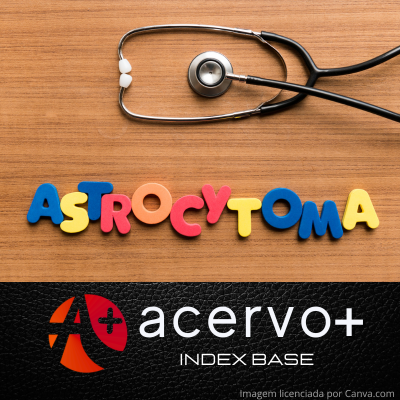Astrocitomas e gliomas: abordagens cirúrgicas, desafios e avanços terapêuticos
##plugins.themes.bootstrap3.article.main##
Resumo
Objetivo: Analisar as limitações das abordagens cirúrgicas no tratamento de astrocitomas e oligodendrogliomas, com base nos avanços na compreensão molecular desses tumores e nas inovações tecnológicas em neurocirurgia. Métodos: Foi realizada uma revisão integrativa. A busca foi feita na base PubMed Central (PMC) e após a aplicação dos critérios de inclusão e exclusão, 12 artigos foram selecionados. Resultados: Os estudos revelam que a ressecção cirúrgica é a principal abordagem terapêutica para esses tumores, embora a remoção completa seja limitada, especialmente quando localizados em áreas eloquentes do cérebro. Avanços, como a neuronavegação e o monitoramento intraoperatório, têm melhorado a precisão das ressecções, mas a recorrência tumoral, principalmente em gliomas de alto grau, continua sendo um grande desafio. O uso de terapias adjuvantes, incluindo radioterapia e quimioterapia personalizadas, mostra-se fundamental para melhorar a sobrevida dos pacientes. Considerações finais: A natureza infiltrativa dos tumores e os riscos associados às cirurgias em áreas funcionais do cérebro destacam a necessidade de equilibrar a extensão da ressecção com a preservação da funcionalidade cerebral. Novas abordagens, como a terapia térmica intersticial a laser (LITT) e o uso de tecnologias intraoperatórias avançadas, devem ser foco de futuras pesquisas.
##plugins.themes.bootstrap3.article.details##
Copyright © | Todos os direitos reservados.
A revista detém os direitos autorais exclusivos de publicação deste artigo nos termos da lei 9610/98.
Reprodução parcial
É livre o uso de partes do texto, figuras e questionário do artigo, sendo obrigatória a citação dos autores e revista.
Reprodução total
É expressamente proibida, devendo ser autorizada pela revista.
Referências
2. ALHALABI OT, et al. Repeat surgery of recurrent glioma for molecularly informed treatment in the age of precision oncology: A risk–benefit analysis. Journal of Neuro-oncology, 2024; 167(2): 245-255.
3. ANDREOU T, et al. Hematopoietic stem cell gene therapy targeting TGFβ enhances the efficacy of irradiation therapy in a preclinical glioblastoma model. Journal for ImmunoTherapy of Cancer, 2021; 9(3): e001143.
4. BUTENSCHOEN VM, et al. Surgical treatment and neurological outcome of infiltrating intramedullary astrocytoma WHO II–IV: a multicenter retrospective case series. Journal of Neuro-oncology, 2021; 151: 181-191.
5. CUI M, et al. Combined use of multimodal techniques for the resection of glioblastoma involving corpus callosum. Acta Neurochirurgica, 2022; 164: 689-702.
6. DIMOU J, KELLY J. The biological and clinical basis for early referral of low grade glioma patients to a surgical neuro-oncologist. Journal of Clinical Neuroscience, 2020; 78: 20-29.
7. GIUSSANI C, et al. Perilesional resection technique of glioblastoma: intraoperative ultrasound and histological findings of the resection borders in a single center experience. Journal of Neuro-oncology, 2023; 161(3): 625-632.
8. GRABOWSKI MM, et al. Stereotactic Laser Ablation of Glioblastoma. Neurosurg Clin N Am. 2021;32(1):105-115.
9. IUS T, et al. Is age an additional factor in the treatment of elderly patients with glioblastoma? A new stratification model: an Italian Multicenter Study. Neurosurgical focus, 2020; 49(4): E13.
10. JANJUA MB, et al. Diffuse intrinsic pontine gliomas: Diagnostic approach and treatment strategies. Journal of Clinical Neuroscience, 2020; 72: 15-19.
11. KHOSHNEVIS M, et al. Feasibility of intratumoral 165Holmium siloxane delivery to induced U87 glioblastoma in a large animal model, the Yucatan minipig. PLoS One, 2020; 15(6): e0234772.
12. KORUGA N, et al. Factors affecting outcome in the treatment of glioblastoma. Acta clinica Croatica, 2021; 60(3): 373-378.
13. LIM J, et al. Maximal surgical resection and adjuvant surgical technique to prolong the survival of adult patients with thalamic glioblastoma. PLoS One, 2021; 16(2): e0244325.
14. LOWE S, et al. Current clinical management of patients with glioblastoma. Cancer Reports, 2019; 2(6): e1216.
15. ROGOZIŃSKA E, et al. Treatment of newly diagnosed glioblastoma in the elderly: a network meta‐analysis. Cochrane Database of Systematic Reviews, 2020; (3).
16. SCHNEIDER M, et al. Safety metric profiling in surgery for temporal glioblastoma: lobectomy as a supra-total resection regime preserves perioperative standard quality rates. Journal of neuro-oncology, 2020; 149: 455-461.
17. THOMAS JG, et al. Laser interstitial thermal therapy for newly diagnosed and recurrent glioblastoma. Neurosurg Focus, 2016; 41(4):E12.
18. TRUNIN Y, et al. Stereotactic irradiation in the complex treatment of patients with intracranial pilocytic astrocytoma. Zhurnal Voprosy Neirokhirurgii Imeni NN Burdenko, 2021; 85(2): 34-46.
19. VEGA RA, et al. Combined surgical resection and laser interstitial thermal therapy for glioblastoma. Journal of Neurological Surgery Part A: Central European Neurosurgery, 2020; 81(04): 348-354.
20. ZHOU Z, et al. Treatment with endoscopic transnasal resection of hypothalamic pilocytic astrocytomas: a single-center experience. BMC surgery, 2021; 21: 1-9.

